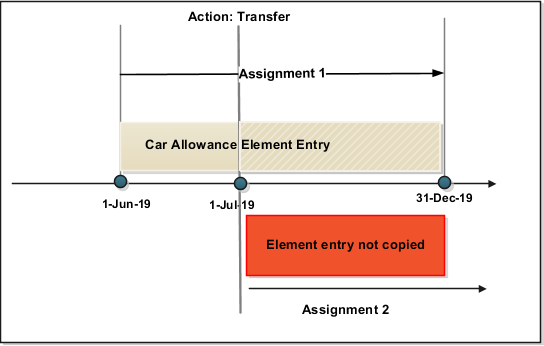Examples of Copying Element Entries During an Employee Transfer
A recurring element entry's start and end dates determine if the Local or Global Transfer process copies it to the new payroll relationship.
|
Scenario |
Are The Element Entries Copied |
|---|---|
|
When the start and end date of the element entry is before the global transfer date. |
No |
|
When the start and end date of the element entry is after the global transfer date. |
No |
|
When the global transfer date is between, or equal to, the start and end date of the element entry. |
Yes |
For further info, see the following sections.
Example 1: Recurring element entry dates are before the global transfer date
An employee is paid a car allowance of $500 that starts on 1 January and ends on 30 January. On 1 August, you transfer them to a different legal employer.
In this case, the process doesn't copy the car allowance element entry as its start and end date are before the global transfer date.

Example 2: Recurring element entry dates are after the global transfer date
Let's consider the previous example of the employee. This person has paid a car allowance of $500 that starts on 1 June and ends on 31 December. Effective 1 July, the company decides to increase the allowance to $600. On 1 May, you transfer them to a different department within the same company.
In this case, the process doesn't copy the recurring car allowance element entry.
